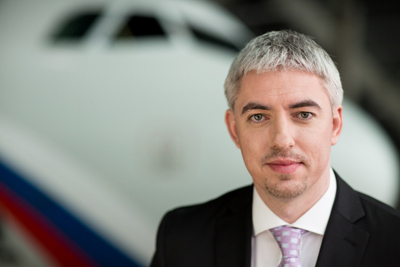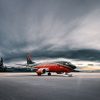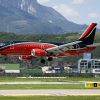 When addressing the Legislative Council on the 13th of January, 2015 the Hong Kong’s Chief Executive Leung Chun-ying revealed the government’s intentions to turn the city into a major aviation finance hub capable of competing with the likes of Ireland and Singapore. The upcoming changes in Hong Kong’s tax legislation and financial system serve as yet another clear signal that the Asia Pacific region is getting ready to grab the largest piece of the lucrative aviation finance pie.
When addressing the Legislative Council on the 13th of January, 2015 the Hong Kong’s Chief Executive Leung Chun-ying revealed the government’s intentions to turn the city into a major aviation finance hub capable of competing with the likes of Ireland and Singapore. The upcoming changes in Hong Kong’s tax legislation and financial system serve as yet another clear signal that the Asia Pacific region is getting ready to grab the largest piece of the lucrative aviation finance pie.
“Being the world’s third largest financial centre, Hong Kong undoubtedly has the potential to evolve into a leading aviation finance hub. However, there is still a lot to be done. Firstly, when it comes to flexibility, the existing tax system for leasing companies is still behind the ones in Ireland and Singapore. Then there is also the issue of a wider geography of Double Taxation Avoidance Agreements and the ratification of the Cape Town Treaty. The Treaty would certainly be a good starting point for a rising aviation leasing hub,” shares Tadas Goberis, the CEO and Chairman of the Board at AviaAM Leasing.
The newly revealed plans of the HK officials have come as a direct response to the rising activity of local participants of the aviation finance market. For the last couple of years Asian banks and investors have been acquiring substantial aviation assets either directly from the manufacturers or via the acquisitions of the existing market players.
There’s no need to dig deep for examples: starting with the Japanese Sumitomo Mitsui and Mitsubishi UFJ Lease & Finance Co spending billions on grabbing several European and US-based leasing businesses in 2012, and up to the most recent Cheung Kong’s intentions to enter the market with its own initial portfolio of 60 aircraft. In addition, during the last several weeks it was reported that the Australian Macquarie AirFinance might soon sign a deal with AWAS to buy 100 newly built and on-order airplanes whilst China Aircraft Leasing Company had placed an order for 100 Airbus A320s.
Whether the primary goals are diversification, expansion beyond the home markets and a natural exploration of new promising opportunities – global aviation finance system is  naturally shifting to the East (along with the demand for aircraft). Moreover, since many Asian carriers prefer to partner up with local lessors (should they have the capabilities), no wonder that Asian leasing companies and other financial institutions are quickly lining up for new aircraft.
naturally shifting to the East (along with the demand for aircraft). Moreover, since many Asian carriers prefer to partner up with local lessors (should they have the capabilities), no wonder that Asian leasing companies and other financial institutions are quickly lining up for new aircraft.
At the same time, just having a bunch of newly-built aircraft doesn’t guarantee that one will enjoy high yields. Yes, investing in aircraft brings 2-3 times higher margins than investing in air carriers, however considering certain signs of deceleration in the Chinese economy and a rising concern related to an over-capacitated Asian fleet, the actual growth in demand for new aircraft may mismatch the forecasted one. Moreover, a substantial drop in oil prices will bring airlines a breath of fresh air and lessen the pressure for fleet renewals thus prolonging the service of mid-life airplanes and current generation aircraft types.
“Lower jet fuel prices may allow the current generation of narrow-body aircraft, such as Airbus A320ceo and the Boeing 737NG, to remain economically competitive with next-generation aircraft – Airbus A320neo and Boeing 737MAX,” shares Tomas Sidlauskas, VP Sales at AviaAM Leasing. “If the current models maintain higher values they would provide securitizations with higher-than-expected cash flows. Low fuel costs may also support airline profitability, lowering potential default risks in the near term. If the operating cost differential between current and next-generation aircraft decreases, demand for the B737NG and A320ceo families could prove more resilient than forecasted and cash flow/securitizations would be positive.”
According to the International Air Transport Association, as of January 2, 2015 the average price for jet fuel was $1.71 per gallon – 18.1% lower than a month before that and down 43.2%, year over year. From a long term perspective, a sustained drop could potentially have an impact in the estimated operating cost reduction of next-gen aircraft. For instance, the current jet fuel price is approx. 51.1% lower than the one Boeing has assumed in calculating the estimated $112 million in cost savings for a fleet of 100 B737 MAX 8s.
“Meantime, the entrance of new players is certainly a good sign for the industry. It is especially beneficial to carriers which get more options to choose from. However, in many cases the new entrees don’t have a strong background in either aircraft finance or aviation in general. Buying an aircraft is just a small step in a 10-15-20 year-long uneasy road one will have to travel while managing the asset. Will the lessor be able to monitor the asset as it is operated? Will it be possible to successfully remarket the aircraft should the operator decide to squeeze its fleet? Does one possess the required technical knowledge and market understanding to ensure long-term residual values? These are the questions that new aircraft finance players should address upfront. Hopefully, they will find well-established partners from within the aviation community to guide them through the exciting but challenging times,” concludes Tadas Goberis, the CEO and Chairman of the Board at AviaAM Leasing.





